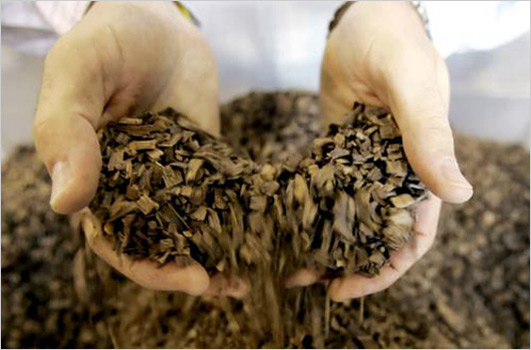
The art of wine aging has evolved significantly over the centuries, transforming from a mere necessity for transportation and storage to a pivotal step in crafting fine wines. This evolution, witnessed in virtually every wine-producing region globally, revolves around the use of wooden containers, typically oak barrels, to enhance and refine the wine's characteristics.
The choice of wood plays a crucial role in this process. Different types of wood impart distinct aromas, flavors, structures, and hues to the wine. Moreover, the treatment of the wood itself - including toasting, steaming, drying, and the specific dimensions and volume of the barrels - significantly influences the final product. However, the cost of wood, space limitations in wineries, and resource constraints have led to the development and acceptance of alternative wood-aging techniques.
One such method involves submerging pieces of wood directly into the wine. This technique, sanctioned and normalized in certain wine regions and even approved by the European Union, employs a variety of forms. The most common are wood chips, but the method also includes cubes, powder, staves, domino pieces, infusion sheets, and splinters. These are all immersed in wine vats to simulate traditional barrel aging.
There exists a stigma around this practice; openly admitting to using these methods might lead some consumers to prematurely judge or even reject the wine. Consequently, many wineries discreetly employ these techniques to reduce costs, subsequently claiming their wines have been aged in oak barrels for a certain period. In reality, the phrase should be "aged with oak" rather than "aged in oak," and the use of the term "barrel" in this context borders on fraudulent.
Picture a stainless steel vat holding 20,000 liters of wine with hundreds of kilograms of wood in the form of staves and cubes submerged within. After a few months, the wine acquires the desired oaken qualities that many consumers appreciate.
The discernment of these aging methods can be challenging, even for the experienced. Consider a winery producing a million bottles of a particular wine but only possessing 80 barrels. This disparity in numbers raises questions about the authenticity of the aging process claimed by some producers.
As the wine industry continues to evolve, these modern vinification practices highlight the balance between tradition and innovation. They raise important questions about authenticity, cost, and consumer perception in the world of wine.
Founded in 2007, Vinetur® is a registered trademark of VGSC S.L. with a long history in the wine industry.
VGSC, S.L. with VAT number B70255591 is a spanish company legally registered in the Commercial Register of the city of Santiago de Compostela, with registration number: Bulletin 181, Reference 356049 in Volume 13, Page 107, Section 6, Sheet 45028, Entry 2.
Email: [email protected]
Headquarters and offices located in Vilagarcia de Arousa, Spain.